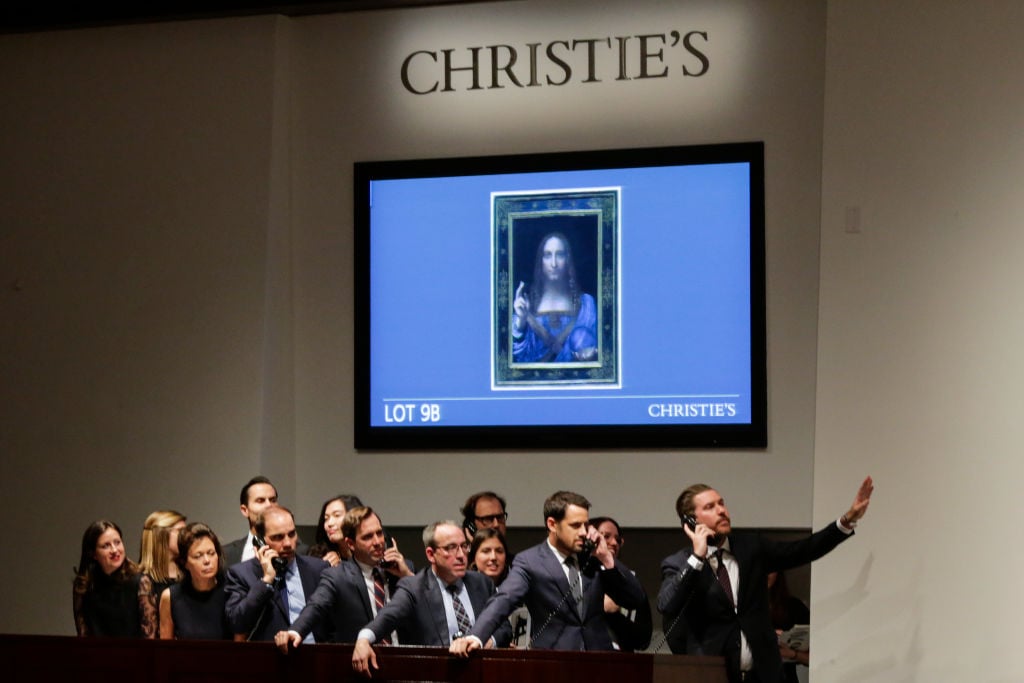
Christie’s sales were up considerably in 2017, thanks in large part to Salvator Mundi, Asian buyers, and concentration at the top end of the market. But while total revenue hit $6.6 billion, a 21 percent increase compared to 2016, private sales dropped significantly, according to a report released this morning.
Overall, auction sales totaled $5.9 billion, a 33 percent increase over 2016, while private sales declined to $611.8 million, or 35 percent.
Accounting for an outsize proportion of the global total was the November sale of Leonardo da Vinci’s Salvator Mundi (circa 1500), which, after a marketing blitz and worldwide tour, smashed all previous auction records to sell for $450.3 million with premium. We estimate that the sale can be credited with 37.5% of Christie’s revenue increase from 2016.
“I think the overall picture is that the market is quite robust. Especially at the higher levels you’ll see that the sale results were led by the super masterpieces,” says Marc Porter, Christie’s chairman for the Americas.
Asked about the dip in private sales, Porter cited a change in Christie’s compensation structure that cut commissions for specialists conducting private sales. The policy, which has since been reversed, “had a rather significant impact on the number of private sales that we did,” he says.
“We re-instituted that in the second quarter of 2017 and have instantly seen the number come back up,” Porter says. Another important factor in the year-to-year drop is the comparison to the £180 million private sale of two Rembrandt portraits in late 2016, a joint acquisition by the Louvre and the Rijksmuseum.
Christie’s continues to push forward in the digital realm, noting that online sales reached $72.4 million, an 8 percent increase. For lower-priced works, online engagement is “enormous,” Porter says. “Though the online realm by percentage of value is relatively modest, we’re nonetheless investing heavily in it.” Christie’s says online sales remain the top entry point for new buyers, with the top categories online for new buyers being luxury goods and decorative arts.
Asia continues to be a vital region for business growth, with Chinese collectors accounting for a full one-third of the Impressionist and modern buying contingent. As part of its ten-year plan in Asia, particularly in China, the house has established freestanding galleries in Beijing and Shanghai. Christie’s also launched its Rockefeller collection tour at the Hong Kong Convention Center in December.
“It’s the first time that we have ever launched a major American or European collection in Asia,” Porter says.
Rival auction house Sotheby’s, which is publicly held, released a report at the end of 2017 noting an annual sales total of $4.7 billion, representing a 13.1 percent increase over our 2016 results. Among its top lots was a record-setting painting by Jean-Michel Basquiat, Untitled (1982), which sold for $110 million, far exceeding its $60 million estimate.
Sotheby’s is scheduled to report its fourth-quarter and 2017 earnings later this month or in early March.